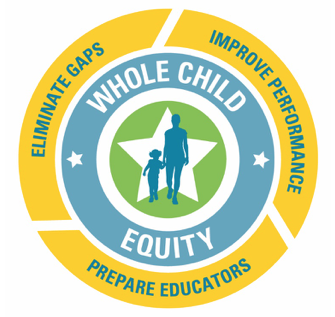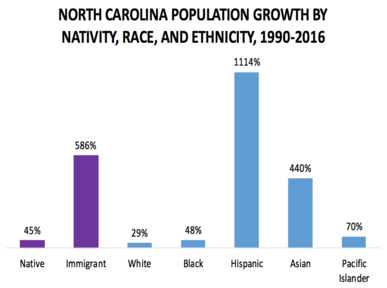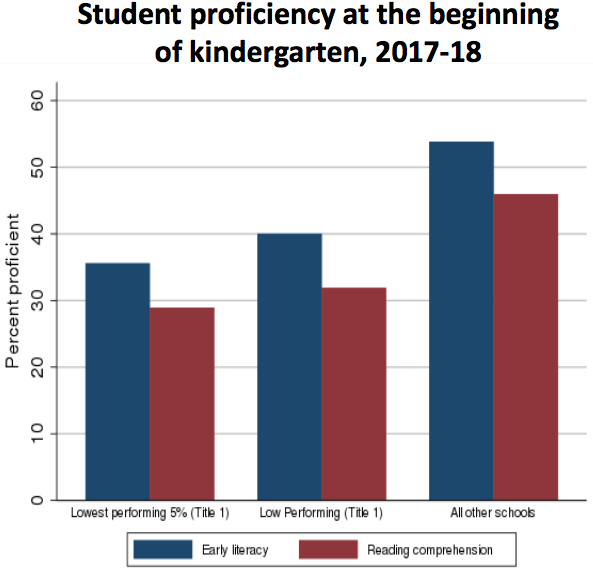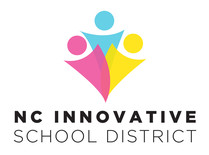
Board Focuses on Implementing New Strategic Plan During Planning Session
After spending several months hammering out a new, five-year strategic plan, members of the State Board of Education devoted two and half days this month to focusing on specific issues to begin delivering on the promise of that plan.
The strategic plan, which the board adopted in August, is aimed at ensuring that all students in North Carolina receive a sound, basic education by having the state’s education system focus on three critical goals, all centered around equity and “whole-child” elements:
- Eliminate opportunity gaps by 2025
- Improve school and district performance by 2025
- Increase educator preparedness to meet the needs of every student by 2025
Each of the three overarching goals includes measureable objectives intended to allow the board and state’s schools to track their progress in achieving those goals.
Meeting this month at N.C. A&T University in Greensboro, the board considered a wide range of issues, including the state’s changing demographics, school turnaround efforts and innovations aimed at boosting educational equity, the relationship between teacher decision-making and student achievement, and approaches to improving school nutrition.
Board Chairman Eric Davis opened the planning session with an urgent call to action, stressing the challenges facing the state’s public schools as well as the state as a whole, starting with a reference to the most recent results from the National Assessment of Educational Progress, or NAEP, released late last month.
“The NAEP scores across the nation and for North Carolina send the same chilling message that too many of students are not ready to successfully compete in the brutally competitive world that our nation has created,” Davis said.
“Stubbornly low academic results persist across the full spectrum of our students – not limited to, but most notably in the fastest growing segments of our students – students of color, children who are learning English and children not born into a middle class or above family. And if current trends hold, and there are no signs that they will change, in a few years, these students, who historically have been the least prepared, will make the majority of our student population. They’ll also be the majority of our workforce – in business, in healthcare, in government, and in our military.
“The NAEP scores and our own assessments clearly show that persistent student performance gaps stem in large part from gaps in opportunity and access. So it’s up to us – particularly those of us in the majority with the power to take the necessary steps to change the system – immediate, intentional, persistent and sustainable change to North Carolina’s public education system to ensure that the future social, economic, security and well-being of all our children are in place and in doing so ensure our own futures.
“That’s what the strategic plan for the North Carolina public school system is all about.”
|

Changing Demographics
Jim Johnson, a professor at UNC Chapel Hill’s Kenan Flagler Business School, told the board during his presentation on the state’s demographic changes that the state’s public schools will continue to see significant increases in numbers of students from minority populations. Johnson said the state’s schools must continue adjusting to those dramatic shifts.
“The way we manage these issues are going to be the key to our ability to thrive and prosper,” Johnson said. Public schools must rethink the way they deliver instruction and services, Johnson said, because increasingly diverse enrollments will mean schools must respond to adequately address that growing diversity.
“The kids who walk in the school door moving forward wont’ fit into the nice and neat [groups] we’re accustomed to putting them in, and they won’t allow you to put them into those [groups],” Johnson said. “This is further transforming the complexion of our society, and what it means is, whose history do we teach? What are the curriculum implications of a more diverse population?”
|

Promoting School Nutrition
Through a partnership with the organization No Kid Hungry NC, the N.C. Department of Public Instruction’s School Nutrition Services section is raising awareness about the importance of school breakfast and promoting innovative approaches to ensure that it’s both available and accessible to more students across the state.
School Nutrition Director Lynn Harvey told board members that the state has seen a steady increase in the number of schools offering innovative breakfast programs – outside traditional cafeteria service – since the State Board in 2011 began allowing schools to incorporate that time into the instructional day. But she said that even more effort is needed to make sure that students are getting a good start on the day.
“We know that when children have access to food just prior to an academic activity, their performance is better than if they had breakfast a few hours earlier,” Harvey told the board.
Currently, she said, only 58% of North Carolina’s students who are eligible for free and reduced-price lunch are also receiving breakfast each morning. In terms of numbers, 250,000 students in need are receiving lunch but not breakfast.
Innovative approaches to providing breakfast can include breakfast in the classroom, Grab and Go to the Classroom and Second Chance Breakfast, which is provided between first and second period classes or during a mid-morning break.
Julie Pittman, the 2018 Western Region Teacher of the Year who is now serving as a teacher on loan to No Kid Hungry, told the board that she was more effective when the high school where she teaches English in Rutherford County gave students access to breakfast.
“I became a glorified babysitter in the morning when I had a kid who hadn’t eaten,” Pittman said. “Because they’re not getting the content.”
“School can be a place where they can get the good start to the day and be ready to learn,” Pittman said. “It eliminates the barrier for all kids, and it doesn’t necessarily have to do with whether you can afford to feed your kid.”
In a concluding call to action, Harvey and Pittman urged the board to set a goal of raising the percentage of free and reduced-price meal eligible students eating breakfast from 58% to 62% during the next five years, to focus on high-need schools in each of the eight educational regions of the state, to identify the barriers districts face in implementing innovative school breakfast models and to develop an appropriate action plan.
They also asked the board to set goals around increasing the availability and access to summer meals programs.
|

School Turnaround and Early Grade Literacy
Education researcher Gary Henry, with whom the State Board and Department of Public Instruction contracted to study the state’s lowest performing schools, and fellow researchers who have studied reading performance in the early grades, stressed to the board the value of early reading assessments in helping teachers diagnose student needs.
They told the board that those early literacy assessments, which were introduced in 2013-14 for all K-3 students in the state using the mClass tool, are highly predictive of student performance on the state’s end-of-grade reading exams in third grade. They also pointed to data showing summer learning loss in early literacy skills and reading comprehension.
They presented the board with five key findings from their research on early literacy in North Carolina schools:
- Only 1 in 3 students are proficient in both early literacy and reading comprehension at the beginning of kindergarten.
- Approximately 60,000 students are no longer proficient in early literacy and/or reading comprehension after summer break each year.
- The North Carolina Transformation (NCT) school turnaround initiative had no effect on early-grade literacy or comprehension
- Literacy and comprehension scores accurately predict which students will or will not achieve proficiency on the third-grade reading exam over 70 percent of the time.
- Racial achievement disparities on third-grade reading exams were reduced by approximately 22 percent in the years after early literacy assessments began.
|
 When asked about the predictive value of the mClass assessments, Henry told the board that his research in North Carolina finds it to be an accurate measure.
“This is a surprisingly valid instrument to predict later reading skills of these students," Henry said. "I did not expect anywhere close to this percentage of accuracy.”
On the issue of school turnaround efforts, Henry told the board that turnover among teachers and principals is often a critical weakness among schools struggling with low performance.
“These schools are subject to incredible instabilities,” Henry said. “We feel very strongly that in the comprehensive needs assessment, it should include teacher and principal turnover, experience and effectiveness data for individual teachers.”
He said that “strategic staffing” approaches in Tennessee have helped schools in that state make positive gains in student achievement.
“If you’re going to make progress, one of the things that’s very difficult to do is to get districts to pay teachers in one school differently from teachers in other schools,” he said. “But unless you reward the teachers for the extra hours and the extra work in these schools, it’s very unlikely that the students are going to be served well and really have the kind of gains that would like to see.”
Susan Allred, a former North Carolina educator who later worked on school turnaround efforts in Kentucky, emphasized the need for well-organized systems and clear alignment among all education entities to achieve strong performance among all schools.
“In Kentucky, they have a state department that understands that they all have to work together,” Allred said, “and if they don’t, and they’re unaligned, then they’re confusing the people out there. … You’ve got to have a clear, aligned message.”
She praised the board’s strategic plan as “awesome,” but that it needs to be understood by everyone involved – from DPI staff to individual schools.
“If you’re able to execute this plan, and everyone in the agency understands it, and everyone who’s a recipient of it understands it, then the next thing you need to do is talk to people in the legislature as you are doing it,” she said. “You have a huge job, but it is doable, and you can’t give up just because someone makes you mad.”

School Innovation and Equity
The board wrapped up its two-day planning session with a presentation about the innovative approaches to equity and a whole-child focus being applied at North Edgecombe High School, which as a “restart school,” has gained charter-like flexibility.
Donnell Cannon, the school’s young principal who completed N.C. State University’s Northeast Leadership Academy (NELA), told the board that each of the 220 students at the school is recognized as an individual with particular interests and goals. They don’t try to teach all 220 the same way because that would ignore each child’s individuality, he said. The success he’s had at North Edgecombe is because they’ve moved away from standardization and focused instead on getting each child what they need. And that, he said, is equity.
Under Cannon’s leadership since 2015, North Edgecombe has exceeded growth goals for the last three years under state accountability measures.
|

List of Potential Schools for Innovative School District Released to Board
The State Board this month received a list of 69 schools that meet the criteria to be added to the Innovative School District based on their results on state tests. The lowest performing schools that remain on the list for four years would be taken over by the Innovative School District, which would shift control of the schools from their local districts to an outside operator.
Four additional schools were to have been added to the district for the 2020-21 school year. But the General Assembly passed a bill this year that says no schools have to be added for next school year. The bill became law earlier this month without the signature of Gov. Roy Cooper.
“We all agreed that we were not ready for another school to be entered into the ISD next school year,” Cecilia Holden, the board’s legislative director told board members. “The General Assembly listened.”
The legislation requires the state’s lowest scoring school in the 2019-20 school year to be transferred to the district for the 2021-22 school year. It also requires the lowest scoring school in the 2020-21 school year to join the district the following school year.
|

Western Union Elementary School Gains Global-Ready Recognition
State Board of Education members this month recognized Western Union Elementary School in Union County for its commitment to global education under the State Board’s Global Education Strategic Plan.
Western Union is the 10th in the state to have met the Prepared Level of Achievement under the board’s Global Ready Schools Program. The designation means that the school has effectively implemented systems and process to support global readiness and that many components of global education are embedded schoolwide.
To achieve the recognition, Western Union Elementary completed a rigorous application process that included submission of an application with narratives and links to evidences that supported the self-assessment rating along with a successful site visit by a state evaluation team. In addition to having met the criteria for the “prepared” designation, the school met or exceeded the minimum student achievement requirements for the average composite on statewide achievement assessments and for growth.
Amber Gordon, a fifth grade teacher at Western Union Elementary, told the board that in today’s world, a global education is essential.
“Global education is not only about food, flags, festivals and famous people around the world,” she said. “Instead, it is a broader focus on attitudes, values, challenges, similarities and differences of other countries and we are all interdependent on one another.”
Through a global education, she said, “the hope is to have developed globally competent people who can appreciate different cultures and who embrace other perspectives and become successful and responsible global citizens.”
|
|